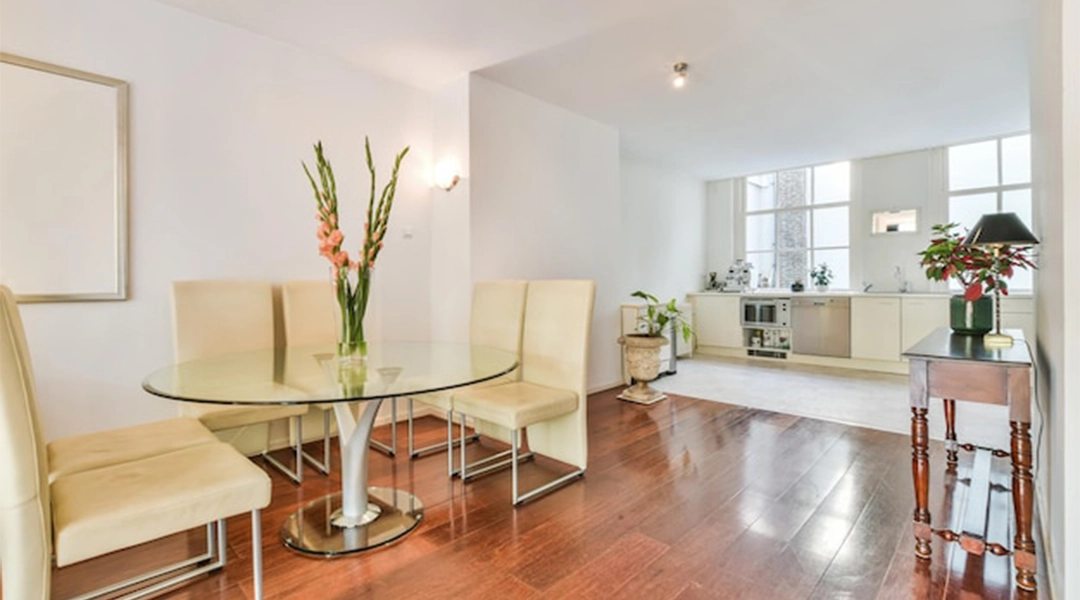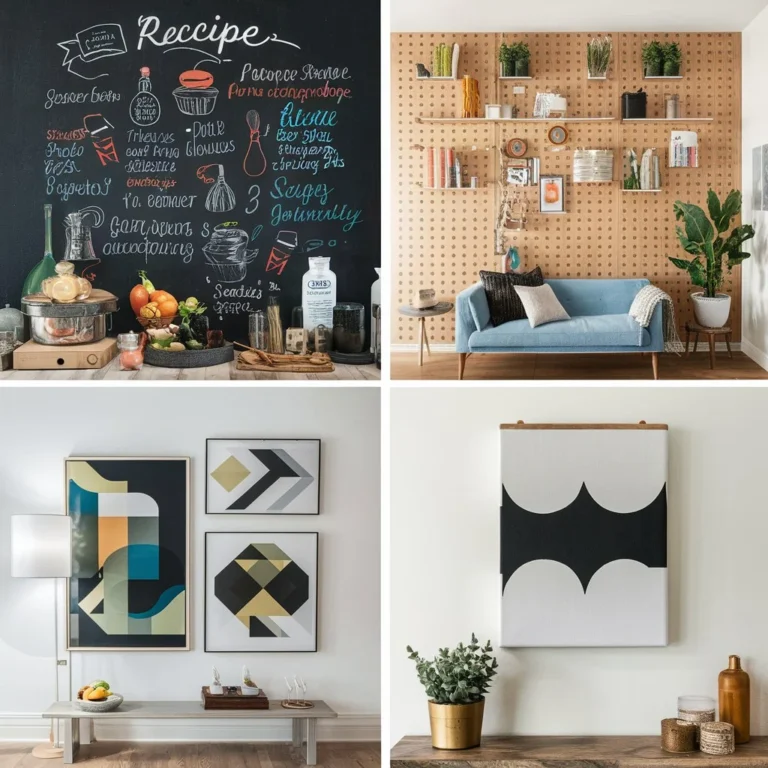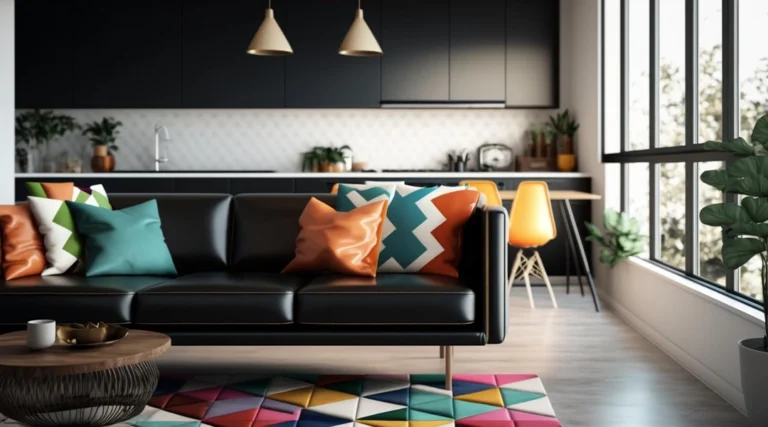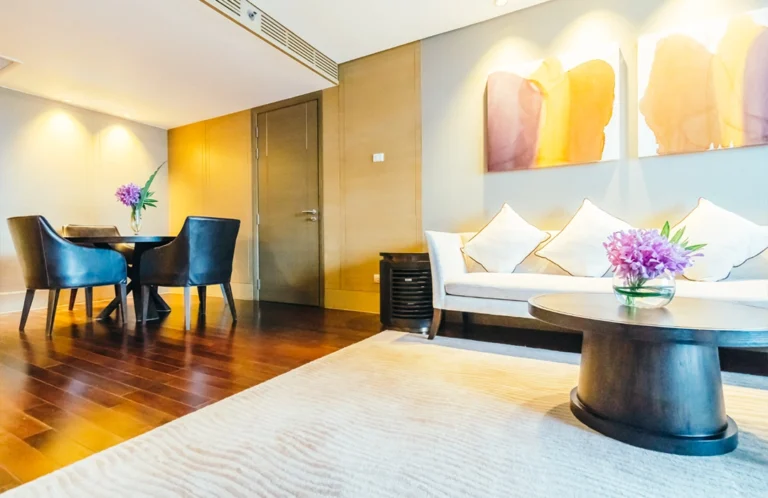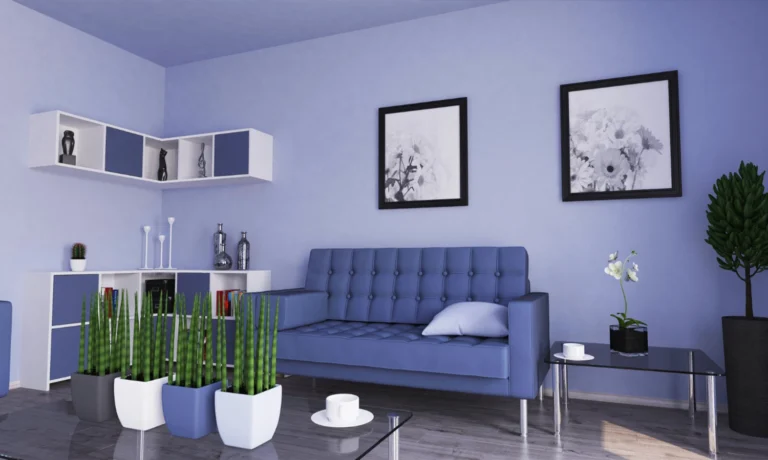How to Create Stunning Decor for an L Shaped Living Room Dining Room
When decorating an L-shaped living room dining room, it’s important to create a seamless and inviting space that flows well. The key is to define the different zones while maintaining a sense of unity throughout the area. This can be achieved through strategic furniture placement, coordinating color palettes, and thoughtful lighting choices.
By following some simple design principles, you can transform your L-shaped living room dining room into a harmonious and visually appealing space that meets both your functional and aesthetic needs. This guide will provide valuable tips and ideas to help you make the most of your layout and create a stylish and functional living and dining space.
Maximizing Space In An L Shaped Living Room Dining Room
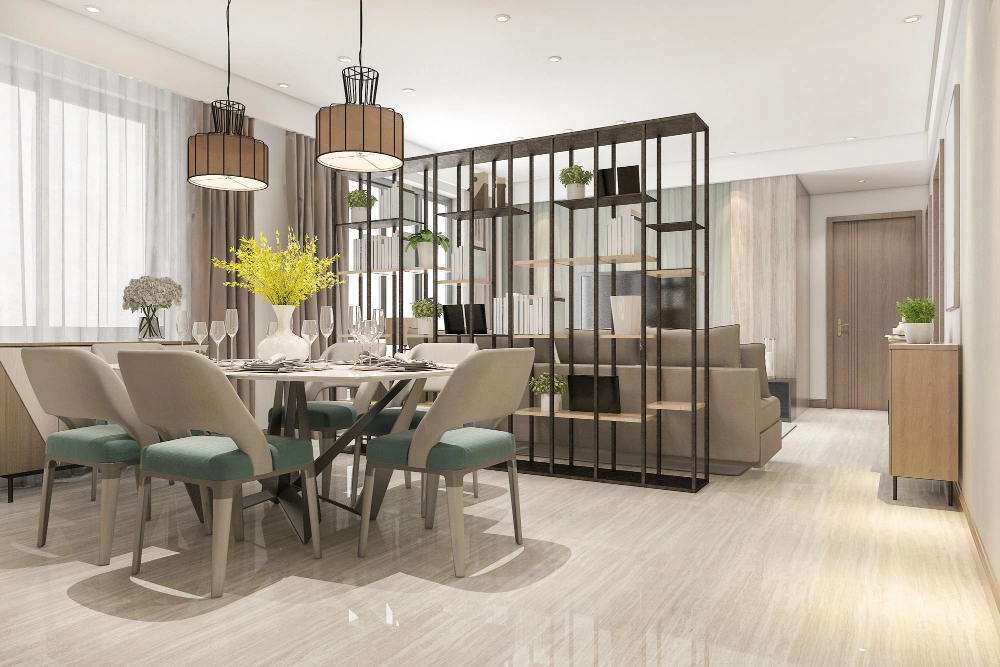
The L-shaped living room dining room layout offers a unique challenge when it comes to decorating and optimizing the available space. With the right strategies and design elements, you can make the most of this versatile layout to create a functional and visually appealing living and dining area.
Choose Multipurpose Furniture
Utilize multipurpose furniture pieces to maximize space in your L-shaped living room dining room. Consider a sofa bed that can serve as seating during the day and be transformed into a bed for overnight guests. Opt for a dining table with storage compartments to keep dining essentials organized without occupying additional space. This way, you can make the most of the available square footage while maintaining functionality.
Utilize Vertical Space
Take advantage of the vertical space to optimize storage and decor in your L-shaped living room dining room. Install shelves or cabinets on the walls to store books, display decorative items, or keep dining essentials within easy reach. Consider hanging pendant lights above the dining area to illuminate the space while adding a stylish touch without occupying valuable surface area. By utilizing vertical space, you can keep the floor clear and create a visually spacious environment.
Creating A Cohesive Design
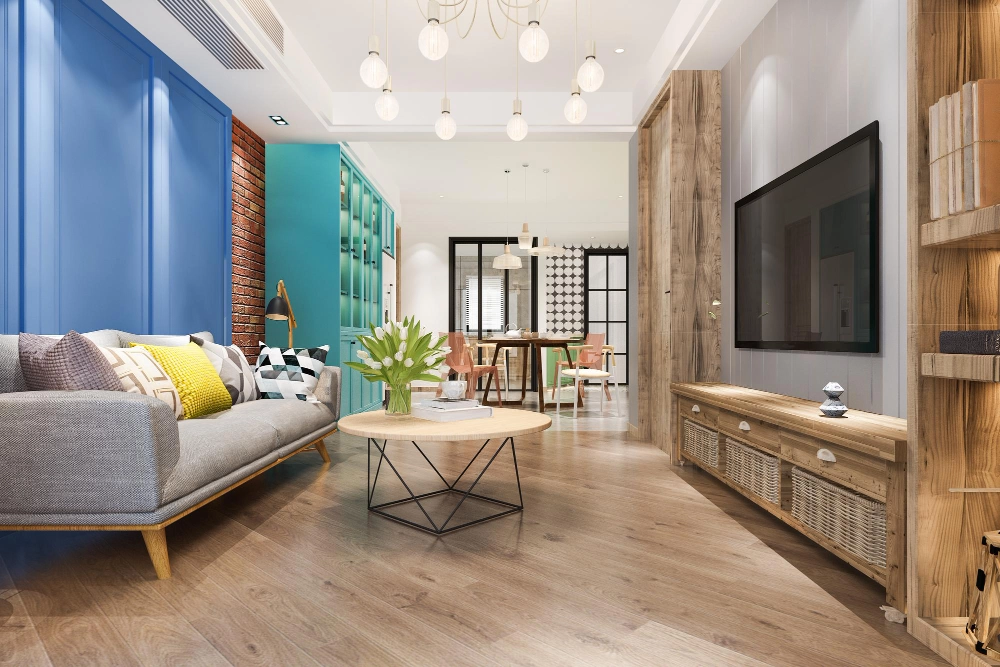
To create a cohesive design in an L-shaped living room dining room, consider using a consistent color scheme and furniture style throughout both areas. Utilize area rugs and lighting to define separate zones and create a unified look. Incorporating multifunctional furniture and thoughtful layout planning can help optimize space and flow.
Aligning Color Schemes
When it comes to decorating an L shaped living room dining room, one of the key factors for achieving a cohesive design is aligning color schemes. By selecting a harmonious color palette, you can create a sense of unity between the two spaces. This doesn’t mean that everything has to be the same color, but rather that the colors should complement and flow seamlessly from one area to the other.
To align color schemes in your L-shaped living room dining room, consider the following tips:
1. Choose a Dominant Color: Select one color to serve as the dominant hue throughout the space. This color will set the tone and foundation for your design. For example, if you prefer a cozy and inviting atmosphere, warm earthy tones like beige or brown can work well.
2. Coordinate Accent Colors: Choose a few accent colors that complement the dominant color. These accents can be used in smaller elements such as throw pillows, curtains, or artwork. For instance, if your dominant color is beige, you can introduce accents in shades of blue or green for a refreshing touch.
3. Utilize Neutrals: Neutrals are an excellent way to tie the two areas together. Consider using neutral shades like gray, white, or cream as a backdrop for both the living and dining spaces. Neutrals create a cohesive and balanced look, allowing other colors to stand out.
Using Area Rugs to Define Spaces
Another effective technique for creating a cohesive design in an L-shaped living room dining room is using area rugs to define spaces. Area rugs serve as visual dividers, delineating the separate zones within the larger space. By strategically placing rugs, you can give each area its own identity while maintaining a sense of continuity.
Here’s how you can use area rugs to define spaces:
1. Select the Right Size: Choose rugs that are large enough to anchor each area. In the dining room, make sure the rug extends beyond the dining table and chairs. In the living room, the rug should be large enough to encompass the seating area.
2. Shape and Positioning: Consider the shape of the room when selecting rugs. Rectangular rugs can accentuate the elongated shape of an L-shaped space, while round or square rugs can add visual interest. Position the rugs in a way that clearly separates the dining and living areas.
3. Complementing Colors and Patterns: Use rugs with colors and patterns that complement the overall design of the room. If your furniture and walls feature bold patterns, opt for a rug with a simpler design. Conversely, if your furniture is more neutral, a rug with a vibrant pattern can add a pop of personality.
By aligning color schemes and using area rugs to define spaces, you can create a cohesive and visually pleasing design in your L-shaped living room dining room. These techniques will help ensure that the two areas flow seamlessly together while maintaining their individuality. So go ahead and unleash your creativity, transforming your space into a harmonious and inviting haven.
Strategic Placement Of Accessories
To decorate an L-shaped living room dining room, strategically placing accessories can enhance the overall look and feel of the space. Utilize area rugs, accent pillows, and artwork to define separate zones, create visual interest, and tie the two areas together cohesively.
Additionally, consider using functional yet decorative elements, such as side tables and floor lamps, to optimize both form and function within the space.
Selecting Functional Decor Pieces
When it comes to decorating an L-shaped living room dining room, selecting functional decor pieces is key. These accessories not only bring style and personality to your space but also serve a practical purpose. Opt for items that not only look great but also provide added functionality. Consider the following:
- Floor lamps with storage: Choose floor lamps that not only illuminate the room but also have built-in shelves or drawers to maximize storage space.
- Decorative baskets: Incorporate decorative baskets as stylish storage solutions. Use them to organize magazines, blankets, or even toys.
- Mirrors: Hang mirrors strategically to create the illusion of a larger space and reflect natural light. Choose mirrors with unique frames to add elegance and visual interest.
- Wall-mounted shelving: Install wall-mounted shelves to display books, photos, and decorative items. These provide an opportunity to showcase your personality and style while keeping your space organized.
- Accent tables with drawers: Invest in accent tables that feature drawers for extra storage. These tables not only provide a place for your guests to set their drinks but also offer discreet storage options.
Balancing Scale And Proportion
Another crucial aspect of decorating an L-shaped living room dining room is balancing scale and proportion. Achieving a harmonious visual balance is essential to create a cohesive and inviting space. Here are some tips to keep in mind:
- Furniture placement: Arrange your furniture in a way that allows for easy flow and conversation. Ensure your seating areas are appropriately sized for the room and do not overwhelm the space.
- Rugs: Opt for rugs that are proportionally appropriate for your room. Choose larger rugs for larger spaces to create a unified look and prevent the room from feeling disjointed.
- Artwork: Hang artwork at eye level and choose pieces that complement the scale of your furniture. Avoid overwhelming smaller spaces by selecting smaller art pieces or creating gallery walls.
- Lighting fixtures: Select lighting fixtures that are appropriate in scale for the room. Oversized fixtures can overpower a smaller space while undersized fixtures may appear insignificant in a larger room.
Lighting Considerations For Both Spaces
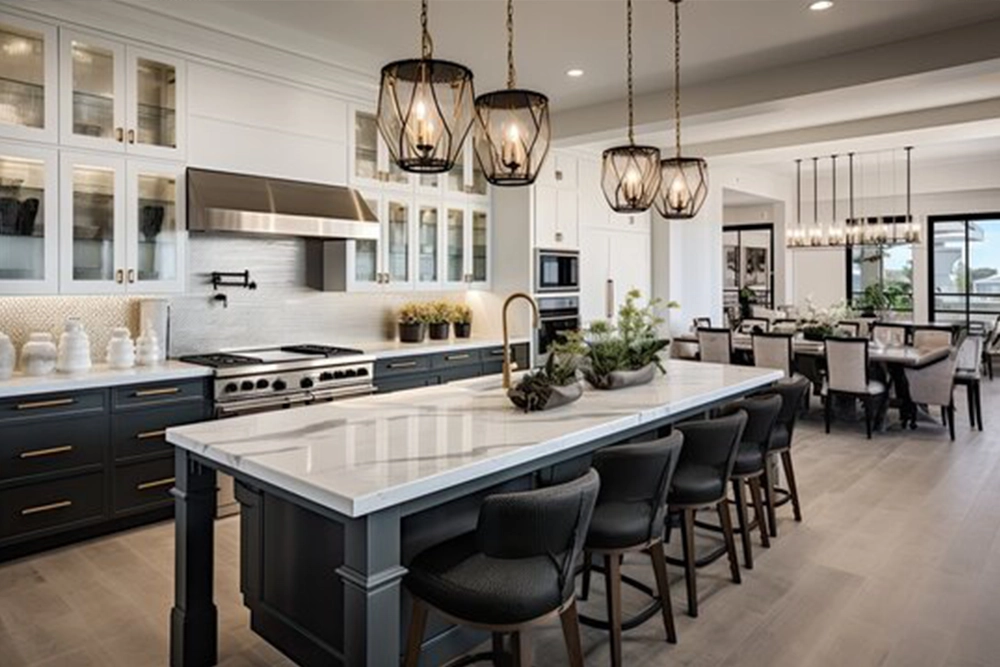
Lighting plays a crucial role in enhancing the ambiance and functionality of both living room and dining room areas, especially in L-shaped layouts. Considering the unique shape and distinct purposes of the two spaces, it is important to carefully plan the lighting design. In this article, we will explore the essential lighting considerations for both the living room and dining room areas in an L-shaped layout.
Layered Lighting Techniques
Layered lighting is a highly effective technique that creates depth, adds visual interest, and enables flexibility in adjusting the lighting according to different requirements. By combining various types of lighting sources, you can achieve the perfect balance of ambient, task, and accent lighting in both your living room and dining room spaces.
Here are some important aspects to consider when implementing layered lighting techniques:
- Begin with the ambient lighting, which provides overall illumination to the entire space. This can be accomplished through the use of ceiling-mounted fixtures such as chandeliers or recessed lights strategically placed to evenly distribute light.
- Add task lighting to illuminate specific areas where activities such as reading, cooking, or eating take place. For example, in the living room, you can incorporate table lamps or floor lamps near seating arrangements, while in the dining area, pendant lights or wall sconces above the table would provide ample task lighting.
- Finally, include accent lighting to highlight architectural features, decorative objects, or artwork. This helps create focal points and adds a touch of sophistication to both the living and dining areas. Wall-mounted spotlights, track lighting, or adjustable recessed lights can serve as effective accent lighting options.
Adaptable Lighting Fixtures
One of the key considerations when selecting lighting fixtures for an L-shaped living room and dining room is versatility. Adaptable lighting fixtures offer the flexibility to cater to different lighting needs and can easily adapt to changes in the room’s layout or function.
Consider the following options for adaptable lighting fixtures:
- Floor and table lamps are portable and can be easily moved between the living and dining areas based on your needs. This allows you to adjust lighting levels or create specific ambiance in different zones of the L-shaped space.
- Track lighting systems offer the advantage of adjustable light heads, allowing you to direct light precisely where it is needed. The individual light fixtures can be repositioned easily along the track, making it adaptable for changes in furniture or room arrangement.
- Dimmable fixtures provide the ability to control the brightness of the lighting in both the living and dining areas. Dimmer switches or smart lighting systems allow you to create the desired mood or ambiance for different occasions, whether it’s a cozy dinner or a lively gathering.
With adaptable lighting fixtures, you can optimize the lighting design of an L-shaped living room dining room, ensuring both spaces are well-illuminated and visually appealing.
Maintaining Flow And Accessibility
Achieving a seamless flow and easy accessibility in a dual-purpose L shaped living room dining room can be accomplished through strategic furniture placement, utilizing open shelves for storage and display, incorporating cohesive color schemes, and incorporating versatile lighting fixtures to enhance the ambiance of the space.
Arranging Furniture For Easy Movement
When it comes to decorating an L-shaped living room dining room, maintaining flow and accessibility is essential for creating an inviting and functional space. One important aspect to consider is how to arrange furniture to ensure easy movement throughout the room.
Here are some tips to arrange furniture for easy movement:
- Optimize the layout by keeping furniture away from high-traffic areas. Position larger items, such as sofas and dining tables, against the walls to maximize open space in the center of the room.
- Create clear paths between different areas of the room by leaving enough space to walk comfortably. Aim for at least 3 feet of clearance between furniture pieces to avoid congestion and allow for easy movement.
- Consider the flow of movement when placing furniture. Arrange seating areas in a way that encourages conversation and interaction, while also providing clear pathways to navigate between the dining and living areas.
- Use area rugs to define different zones within the room. This not only adds visual interest but also helps guide foot traffic. Place rugs under coffee tables, dining tables, or seating areas to visually separate the spaces while maintaining an open flow.
- Keep furniture proportions in mind. Choose pieces that are appropriately sized for the room, ensuring they do not overwhelm the space or obstruct traffic flow. For example, if your dining table is too large for the room, it can make maneuvering around the area difficult. Choosing a table that fits comfortably within the dining space will enhance accessibility.
Creating Pathways In The Room
In addition to arranging furniture, creating clear pathways in an L-shaped living room dining room is crucial for maintaining flow and accessibility. Here’s how you can achieve this:
- Identify the natural pathways within the room based on the entrance points and architectural features. Consider the way people typically move through the space and plan your furniture placement accordingly.
- Carefully arrange furniture to avoid blocking these pathways. Keep in mind the main traffic routes and ensure that there are no obstacles hindering movement.
- Use visual cues to guide the flow. This can be achieved by using lighting fixtures, such as pendant lights or floor lamps, strategically placed to highlight the pathways.
- Consider using room dividers or screens to create subtle barriers that subtly guide movement without sacrificing the open feel of the space.
- Strategic placement of mirrors can also help create an illusion of more space and contribute to a sense of flow. Mirrors can be used to reflect light and ensure clear sightlines throughout the room.
By following these tips on furniture arrangement and creating pathways, you can maintain flow and accessibility in your L-shaped living room dining room while creating a harmonious and functional space.
Frequently Asked Questions Of How To Decorate An L Shaped Living Room Dining Room
How Can I Decorate An L Shaped Living Room Dining Room?
To decorate an L shaped living room dining room, start by determining the function of each area, choosing a color scheme that flows between the two spaces, and arranging furniture to create separate zones. Utilize rugs, lighting, and artwork to define each area and create a cohesive look.
What Are Some Furniture Arrangement Ideas For An L Shaped Living Room Dining Room?
There are several furniture arrangement ideas for an L shaped living room dining room. You can place the dining table and chairs in the corner of the L, use a sectional sofa to divide the two areas, or create a visual separation with a bookshelf or storage unit.
Experiment with different layouts to find the one that best suits your space and needs.
How Can I Make The Most Of A Small L Shaped Living Room Dining Room?
To make the most of a small L shaped living room dining room, consider using multipurpose furniture, such as a dining table with built-in storage or a sofa bed. Use light colors and mirrors to create an illusion of space, and maximize storage with floating shelves or wall-mounted cabinets.
Keep the space clutter-free and opt for small-scale furniture to maintain an open feel.
Conclusion
Creating a harmonious design for an L-shaped living room dining room can be a daunting task. By carefully considering the layout, furniture placement, color scheme, and lighting, you can transform this space into a cohesive and inviting area. Remember to balance functionality and style, utilizing versatile furniture and incorporating personalized touches.
With these tips in mind, you can create a stunning and comfortable living room dining room that meets all your needs.

